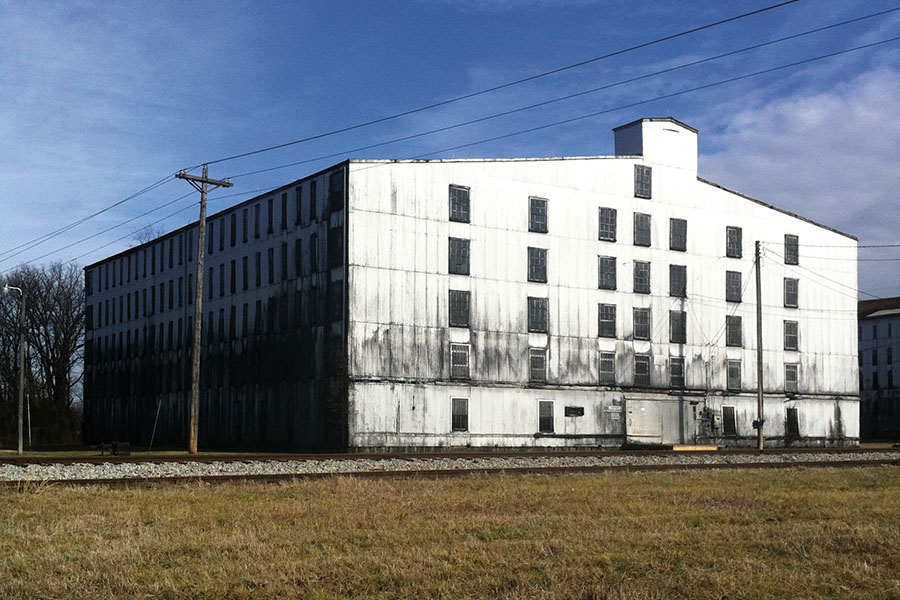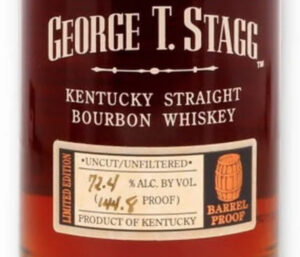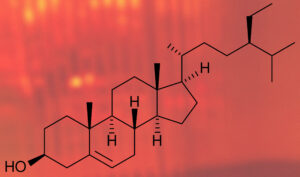
The highest good is like water.
Water gives life to the ten thousand things,
and does not strive.
Lao Tzu, Tao Te Ching
Questions from visitors to Four Roses, where I lead tastings and tours, seem to come in waves, with everyone suddenly interested in the same topic at the same time. During the past couple of weeks ‘the wave’ came the form of more questions than usual about “that black stuff” or “the black mold” that visitors see on growing on the outside of traditional metal-clad rick warehouses like ours. More specifically they wanted to know why it wasn’t growing on our warehouses [1]. Variations on the theme can include: “Why do we paint our wood fences black?” or “Why aren’t our warehouses painted black instead of grey?” [2] . In all these cases, what we’re being asked about is Baudoinia compniacensis, the harmless fungus that grows in the presence of ethanol vapors which are continuously ‘exhaled’ from warehouses like ours.
The fungus was first identified and briefly studied back in the late 19th century by a French pharmacist named Antonin Baudoin and for whom the genus was later named. Baudoin reportedly commissioned two botanists to help him study it. Not long after that interest in the fungus vanished and remained that way for well over 100 years. Only relatively recently has interest in it revived and there’s still a lot we don’t know about it, which is surprising for something so ubiquitous in the environment of maturing whiskey.
My intent here is not to repeat research and information that can already be found on the internet. In fact, I’d like to share links to two articles on the subject for those so interested:
Black Fungal Growth and Distilleries
Baudoinia Compniacensis
What I really want to write about is a behavior of the fungus, not usually discussed, which turns out to be related to a better known phenomenon, Angel’s Share.
FEEDING THE ANGELS
Many Bourbon enthusiasts are familiar with the phenomenon of Angel’s Share, almost always described as the evaporative loss of whiskey from the barrel over time. But folks don’t always realize that the proportions of water and ethanol lost through this process are not necessarily even. While it is possible to lose both at the same rate, local ambient conditions within the warehouse may cause barrels to lose water faster than ethanol or ethanol faster than water. This accounts for the way proof can rise or fall during maturation. The simplest mechanism to explain the differences is humidity.
When humidity in the environment surrounding aging barrels is high, ethanol will evaporate faster than water, causing proof to go down. When humidity is low (or non existent) water will evaporate faster than ethanol, causing proof to go up. [3] What then causes differences in the humidity inside a warehouse?
Traditional uninsulated warehouses have foundations that are open to dirt. This style of warehouse essentially ‘breathes’ through the earth below it. On the lower floors this will generate ambient humidity levels high enough to cause proof to go down. (These are the best floors on which to be an angel.) Much past the third or fourth floors, humidity starts to ‘give out’ and ambient conditions are generally drier. On these floors both water and ethanol start to evaporate at about the same rate and proof doesn’t change much or at all. And on the very topmost floors of the warehouse where there’s practically no humidity (and usually a lot more heat), water will evaporate faster than the ethanol and proof goes up. (The angels living up here get something of a raw deal.)
Now, what exactly does all of the have to do with Baudoinia? The answer to that starts by understanding that the fungus grows on the warehouse in the first place because part of its metabolism is dependent on ethanol. It doesn’t use the ethanol directly for food (energy) but rather converts it into proteins, which may help the fungus withstand changes to its environment, like heat. [4]
With that in mind, now take a look at this photo:

This is the front of one of the very striking warehouses at Deatsville, Kentucky, about 5 miles east of Bardstown. They were originally built as part of the T.W. Samuels Distillery and today are used by several other distilleries including Heaven Hill and Makers Mark. The unique gabled design serves to concentrate heat on the higher floors. Barrels with final proof over 150 are not unheard of coming from the top floor of these warehouses.
Now, notice how the fungus (black stuff) does not grow much higher than the second floor. What’s going on? On the lower floors, humidity levels in the warehouse result in an Angel’s Share rich in ethanol, which in turn supports fungal growth. Higher up, humidity levels taper off and start to favor an Angel’s Share that’s more water than ethanol. With less of an important nutrient available, the fungus growth is inhibited. So it’s not only angel’s that benefit from changes in the whiskey as it matures. Of course, ‘Fungus’ Share’ is a much less appealing concept for most people.
You can observe this same phenomena on these warehouses at the Glencoe campus of Heaven Hill. Once again the fungus stops growing above the second floor.

And here’s one more example from the Stitzel-Weller distillery in Shively, Kentucky. The fungus grows a bit higher here in part because trees, which grow in close proximity, moderate the climate inside. This is also the cooler north side of the warehouse.

NONE MORE BLACK
In the last few years there’s been a trend of building multi-story warehouses with black siding rather than the more traditional grey paint applied directly over galvanized steel. One reason for the change is that all black warehouses absorb more solar heat and keep temperatures in the warehouses higher. This can be viewed as an aid to maturation, especially if your desire is to wind up with more barrels of high proof whiskey. Higher proof at maturation means more whiskey to sell when it’s ultimately proofed down for bottling. As an added benefit, this also reduces maintenance since the black siding effectively hides the fungus. Some distilleries feel the black growth detracts from the appearance of the warehouses. An unintended consequence of Bourbon tourism? Perhaps. Regardless, the fungus lives on.

—
NOTES:
[1] Answer: it does grow on them, but they were recently cleaned. Turns out it’s relatively easy to remove the fungus with a light bleach solution and a power washer. Most of us giving the tours thought they looked just fine they way they were. But we don’t run the circus, just perform there.
[2] The answers to these question are, respectively: we don’t paint the fences, that’s the fungus and we don’t have black warehouses because we’re not trying raise the temperature inside by absorbing more heat from the sun. Grey works just fine for us.
[3] We say all of this is caused by evaporation, but with a little consideration you can see this explanation cannot be entirely correct. Or rather, that evaporation cannot be the sole cause of these changes. And in fact, it’s not. Several different physical forces are involved operating both within and without the barrel. I intend to more fully expand on the details of the phenomena in a separate article.
[4] Source: https://en.wikipedia.org/wiki/Baudoinia_compniacensis#Nutrition



